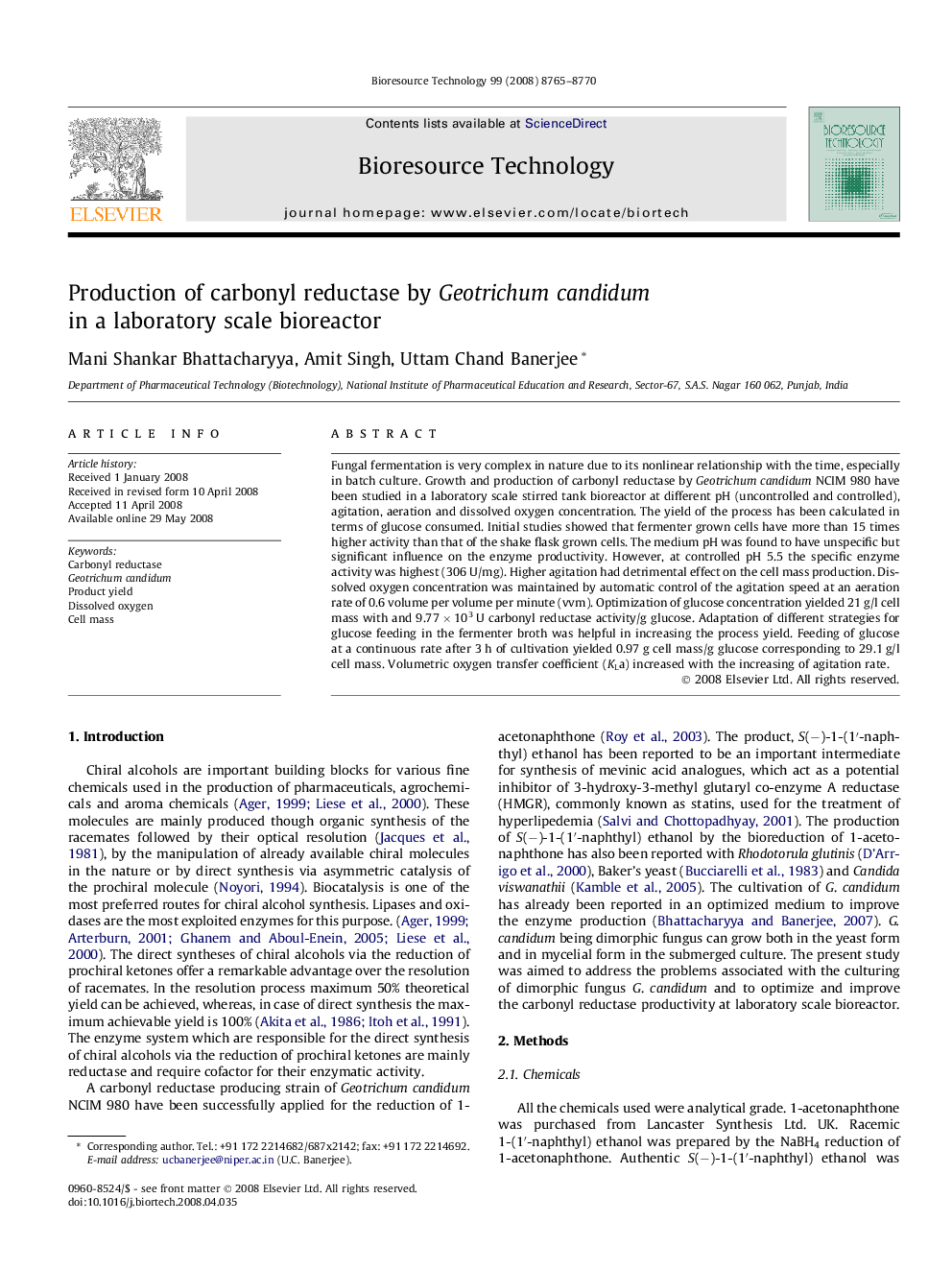| Article ID | Journal | Published Year | Pages | File Type |
|---|---|---|---|---|
| 684778 | Bioresource Technology | 2008 | 6 Pages |
Fungal fermentation is very complex in nature due to its nonlinear relationship with the time, especially in batch culture. Growth and production of carbonyl reductase by Geotrichum candidum NCIM 980 have been studied in a laboratory scale stirred tank bioreactor at different pH (uncontrolled and controlled), agitation, aeration and dissolved oxygen concentration. The yield of the process has been calculated in terms of glucose consumed. Initial studies showed that fermenter grown cells have more than 15 times higher activity than that of the shake flask grown cells. The medium pH was found to have unspecific but significant influence on the enzyme productivity. However, at controlled pH 5.5 the specific enzyme activity was highest (306 U/mg). Higher agitation had detrimental effect on the cell mass production. Dissolved oxygen concentration was maintained by automatic control of the agitation speed at an aeration rate of 0.6 volume per volume per minute (vvm). Optimization of glucose concentration yielded 21 g/l cell mass with and 9.77 × 103 U carbonyl reductase activity/g glucose. Adaptation of different strategies for glucose feeding in the fermenter broth was helpful in increasing the process yield. Feeding of glucose at a continuous rate after 3 h of cultivation yielded 0.97 g cell mass/g glucose corresponding to 29.1 g/l cell mass. Volumetric oxygen transfer coefficient (KLa) increased with the increasing of agitation rate.
